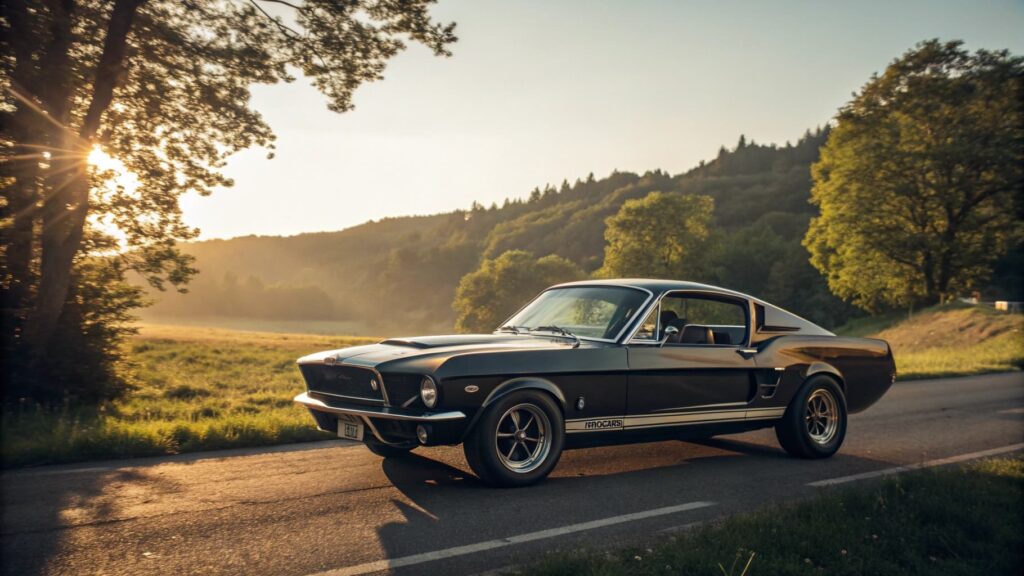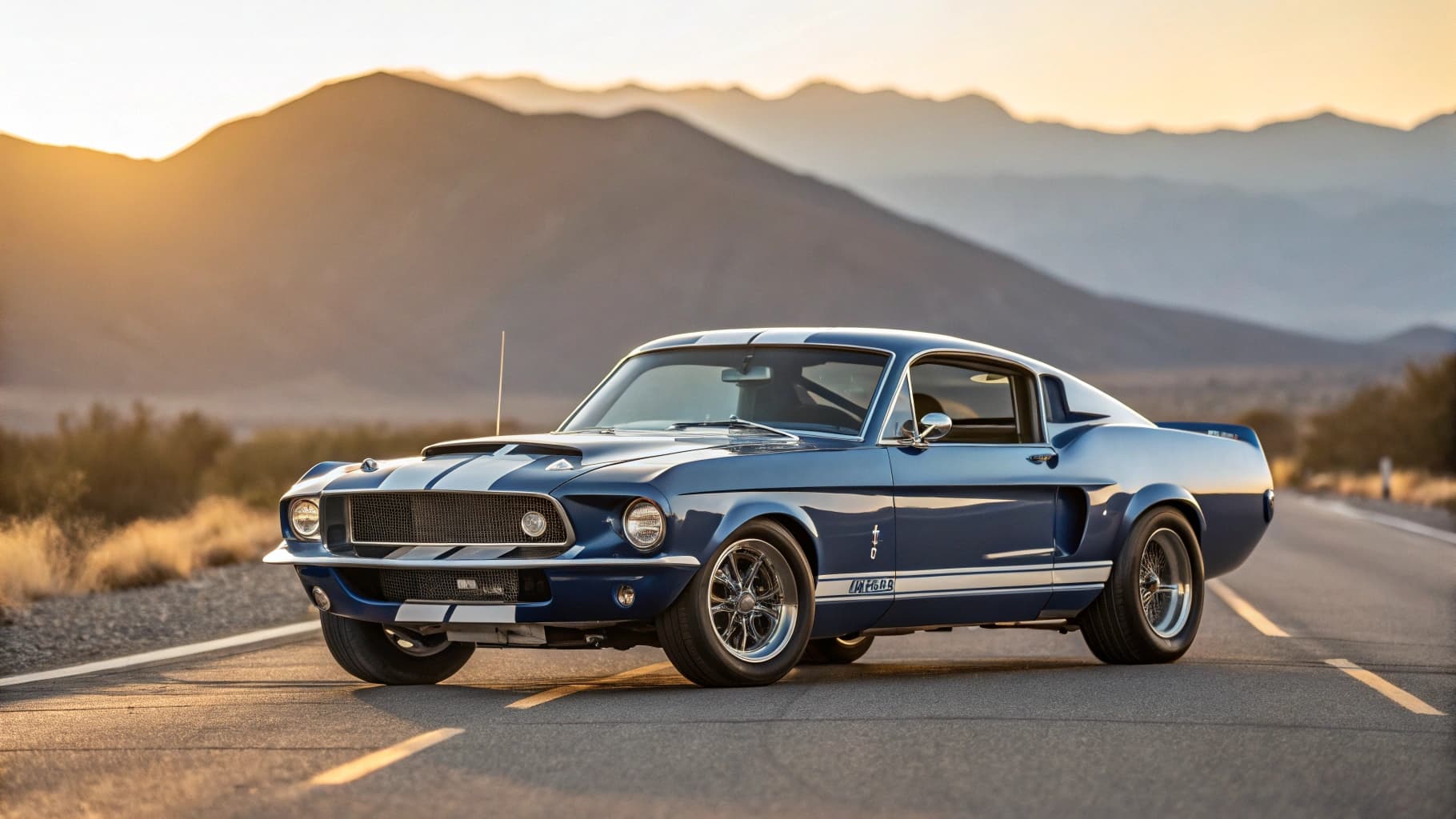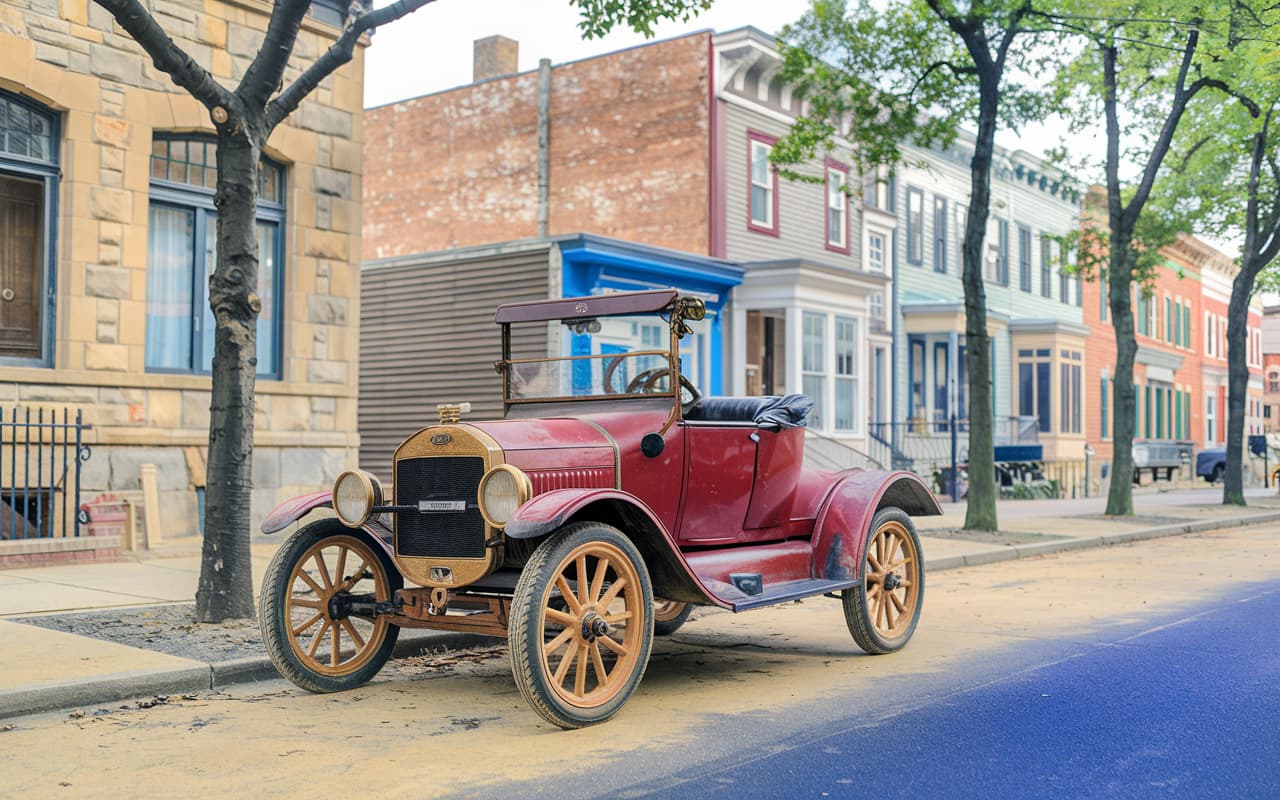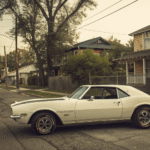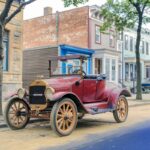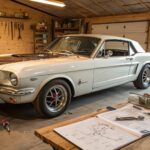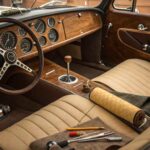Now Reading: Where to Source Authentic Parts for Vintage Cars
-
01
Where to Source Authentic Parts for Vintage Cars
Where to Source Authentic Parts for Vintage Cars
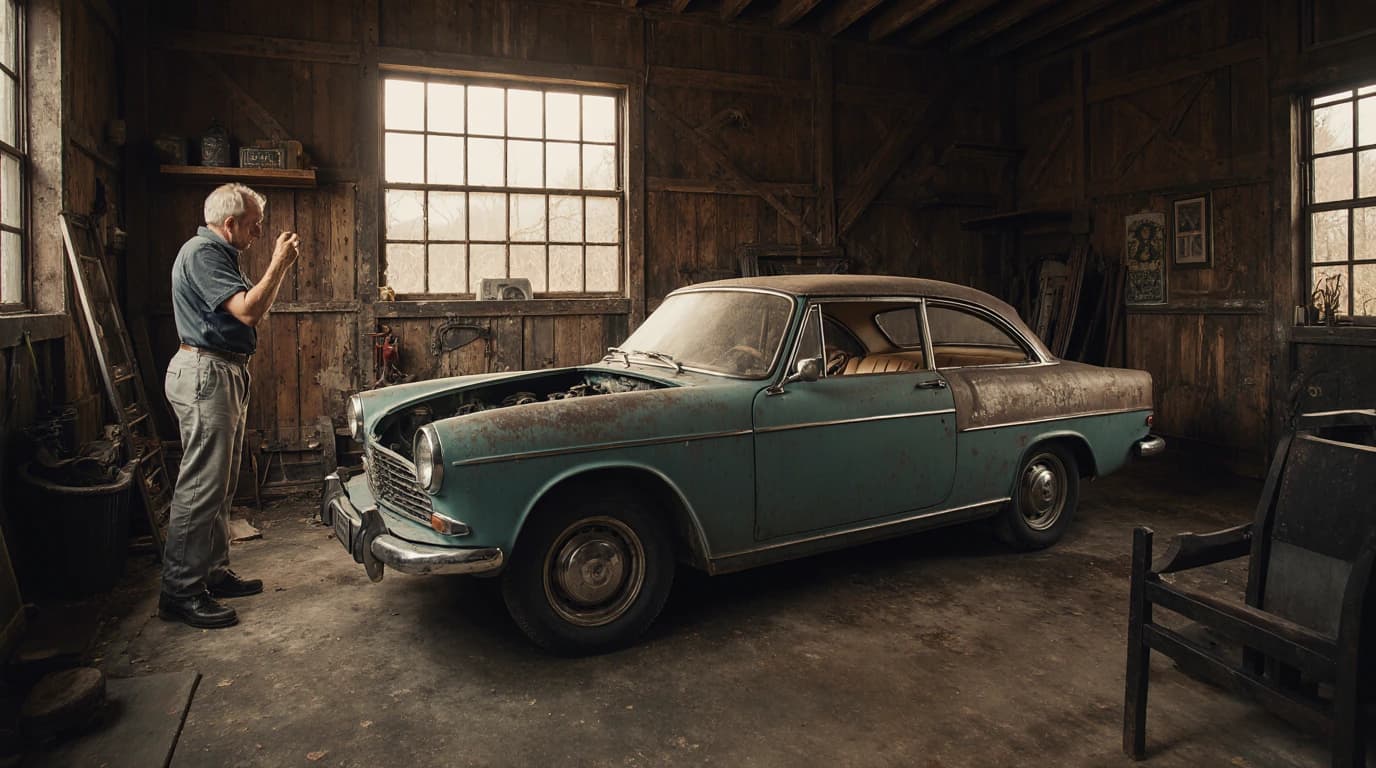
Authentic parts for vintage cars are the backbone of every successful restoration project. Whether you’re bringing a classic beauty back to life or maintaining its timeless charm, sourcing genuine components is crucial to preserving both its performance and value. Finding these parts can feel overwhelming, but with the right approach and knowledge, you can track down the exact pieces your vintage car needs.
When it comes to vintage car restoration, authenticity matters more than ever. Using original or high-quality parts ensures your vehicle runs smoothly and stays true to its heritage. However, vintage parts aren’t always easy to find—they’re often rare, discontinued, or hidden away in specialty shops and salvage yards. This makes knowing where to look and how to evaluate parts essential for every classic car enthusiast.
In this guide, we’ll explore the best sources for authentic parts for vintage cars, from local specialty shops to trusted online retailers and salvage yards. You’ll also learn expert tips on verifying authenticity, negotiating prices, and building valuable connections within the vintage car community. Whether you’re a seasoned restorer or just starting out, this resource will help you navigate the hunt for parts with confidence and success.
1. Explore Specialty Shops for Vintage Car Parts

Find Hidden Local Gems
Looking for vintage car parts locally can feel like a treasure hunt. Many specialty stores are tucked away in industrial areas or hidden behind modest signage. Start your search by attending local car shows or meet-ups—fellow enthusiasts often know the best spots. Also, explore online directories, Facebook groups, and automotive forums in your region. Some of the best shops may not have a strong online presence, so word-of-mouth recommendations are invaluable.
Evaluate Reputation and Inventory
Before making a purchase, research the shop’s reputation. Look for:
- Customer reviews on Google or Yelp
- Testimonials in local car groups or forums
- Signs of expertise, like knowledgeable staff or certifications
Check if the shop offers guarantees, warranties, or return policies—a good sign they stand behind their products.
Understand What Each Shop Offers
Each specialty store may focus on different vehicle types—some on American muscle, others on European classics. Before visiting, make a list of needed parts so you can ask informed questions. Building relationships with shop owners can also open doors to rare, off-market components.
2. Shop Online: How to Buy Authentic Vintage Parts Safely
Use Trusted Online Retailers
When shopping online, stick to well-established platforms that specialize in classic car parts, such as:
- Classic Industries
- Hemmings
- eBay Motors (with seller vetting)
- RockAuto (for certain OEM parts)
Check how long the site has been active and whether it offers customer service via phone or live chat. A solid track record usually means better reliability.
Read Reviews Before Purchasing
Scan product reviews to assess:
- Part authenticity
- Shipping speed
- Customer service quality
Look for consistent positive feedback and avoid sellers with recurring issues.
Ensure Safe Transactions
Only buy from websites with SSL encryption (look for the padlock icon in the URL bar). Use secure payment options like PayPal or credit cards that offer buyer protection. Avoid sharing personal or payment information over email.
3. Utilize Salvage Yards for Hard-to-Find Parts
Locate Local Junkyards
Vintage parts can often be found in salvage yards—sometimes in unexpected places. Search Google Maps or local business directories using keywords like “auto salvage yard” or “junkyard vintage cars.” Smaller family-run yards may have unique finds not available elsewhere.
Inspect Condition Before Buying
When visiting a salvage yard, bring tools and inspect parts thoroughly. Watch for:
- Rust or corrosion
- Cracks or prior repairs
- Matching serial or part numbers
Take photos and consult with a mechanic if you’re unsure about a part’s condition.
Haggle Like a Pro
Most salvage yard prices are negotiable. Offer below asking price respectfully and don’t hesitate to walk away. Expressing interest in multiple parts may help you strike a better deal.
4. Join Vintage Car Clubs and Online Communities
Connect Locally Through Car Clubs
Car clubs are excellent for sourcing parts and advice. Members often have spare parts for sale or trade and are happy to share tips and referrals. Plus, you’ll gain access to exclusive events and swap meets.
Tap Into Online Forums
Forums like The H.A.M.B., ClassicOldsmobile.com, and VW Vortex connect you with global vintage car communities. You’ll find model-specific advice, part recommendations, and often parts for sale.
Attend Swap Meets and Car Shows
Events like Goodguys Rod & Custom or local Classic Car Swap Meets are goldmines for rare parts. Walking through vendor booths, you might find the exact part you’ve been searching for—or get a lead from a vendor or fellow enthusiast.
5. Understand the Value of OEM Parts
What Are OEM Parts?
OEM (Original Equipment Manufacturer) parts are made by the same manufacturer that produced your car’s original components. They’re designed to meet exact factory specs, ensuring compatibility and quality.
Benefits of OEM Parts
- ✅ Perfect Fit: Engineered specifically for your make and model
- ✅ Reliable Performance: Meets or exceeds factory standards
- ✅ Warranty Protection: Often includes manufacturer coverage
Where to Find OEM Parts
- Authorized dealerships for your brand
- Vintage auto parts specialists
- Online retailers with OEM sections
Always verify part numbers before buying to avoid knockoffs.
6. Spot Authentic Vintage Parts with Confidence
Check Part Numbers and Markings
Original parts typically include part numbers stamped or engraved by the manufacturer. Cross-reference with official service manuals or databases for your vehicle.
Beware of Counterfeits
Watch for:
- Low-quality materials
- Misspellings or mismatched logos
- Suspiciously low prices
When in doubt, ask for close-up photos or request the part’s history from the seller.
Get Help from Experts
Mechanics who specialize in vintage restorations or active club members can help verify parts’ authenticity and suggest trustworthy sources.
7. Assess Part Condition and Compatibility

Inspect for Damage or Excessive Wear
Always inspect for rust, cracks, or improper welds. Pay close attention to joints, brackets, and mounts. Minor surface wear may be fine—but structural damage is not.
Verify Vehicle Compatibility
Double-check part numbers with your vehicle’s specs. If you’re unsure, bring the old part as a reference or consult an expert to ensure a proper match.
8. Build Your Parts Network
Form Relationships with Suppliers
Getting to know trusted suppliers can give you early access to rare parts, better prices, and expert advice. Be a loyal customer, and you may be rewarded with exclusive deals.
Use Social Media to Source Parts
Platforms like Facebook Marketplace, Instagram vintage car groups, or Reddit’s r/classiccars are great for networking and sourcing parts from other collectors.
Collaborate with Other Enthusiasts
Trade parts, share leads, and team up on bulk purchases. The vintage car community thrives on collaboration and mutual passion.
9. Consider Reproduction Parts
What Are Reproduction Parts?
Reproduction parts are newly manufactured to the same specs as the originals. While not OEM, they offer a reliable and affordable alternative.
| Feature | OEM Parts | Reproduction Parts |
|---|---|---|
| Authenticity | 100% | High, but not original |
| Cost | High | Moderate |
| Availability | Limited | More common |
| Quality | Variable | Consistent (from trusted brands) |
Choose Reputable Reproduction Manufacturers
- Research reviews in vintage car forums
- Stick to well-known brands in the classic restoration industry
- Get recommendations from club members or mechanics
10. Work Only with Trusted Parts Suppliers
Vet Suppliers Carefully
Look for:
- Years in business
- Certifications or affiliations
- Transparent return and warranty policies
Understand Their Guarantees
Trustworthy suppliers offer warranties or at least a clear return policy. Always ask about product guarantees before purchasing.
Build Long-Term Supplier Relationships
Maintaining a strong relationship with your go-to supplier can mean insider deals, early access to hard-to-find parts, and personalized support.
Conclusion
Sourcing authentic parts for your vintage car doesn’t have to be overwhelming. With the right mix of in-person hunting, online research, community involvement, and supplier relationships, you’ll be well on your way to restoring your classic car to its former glory. The key is persistence, knowledge, and networking—and above all, a passion for the ride.
Happy hunting, and may your vintage restoration be smooth, satisfying, and full of unforgettable discoveries.
Frequently Asked Questions
Where can I find parts for my vintage car?
Specialty shops, online platforms, salvage yards, car clubs, and swap meets are all great sources.
How do I verify if a car part is authentic?
Check part numbers, inspect quality, and consult with experts or official catalogs.
Are OEM parts better than reproduction parts?
OEM parts ensure authenticity and perfect fit but may be more expensive. Reproductions are more affordable and easier to find.
What should I check before buying parts online?
Verify site security, read reviews, confirm compatibility, and ensure buyer protection options are available.
Can I negotiate prices at salvage yards?
Yes! Be respectful, know the value of the part, and don’t be afraid to haggle or walk away.
Why is networking important in sourcing car parts?
Building relationships with suppliers and enthusiasts gives you access to rare parts, insider deals, and trusted recommendations.



